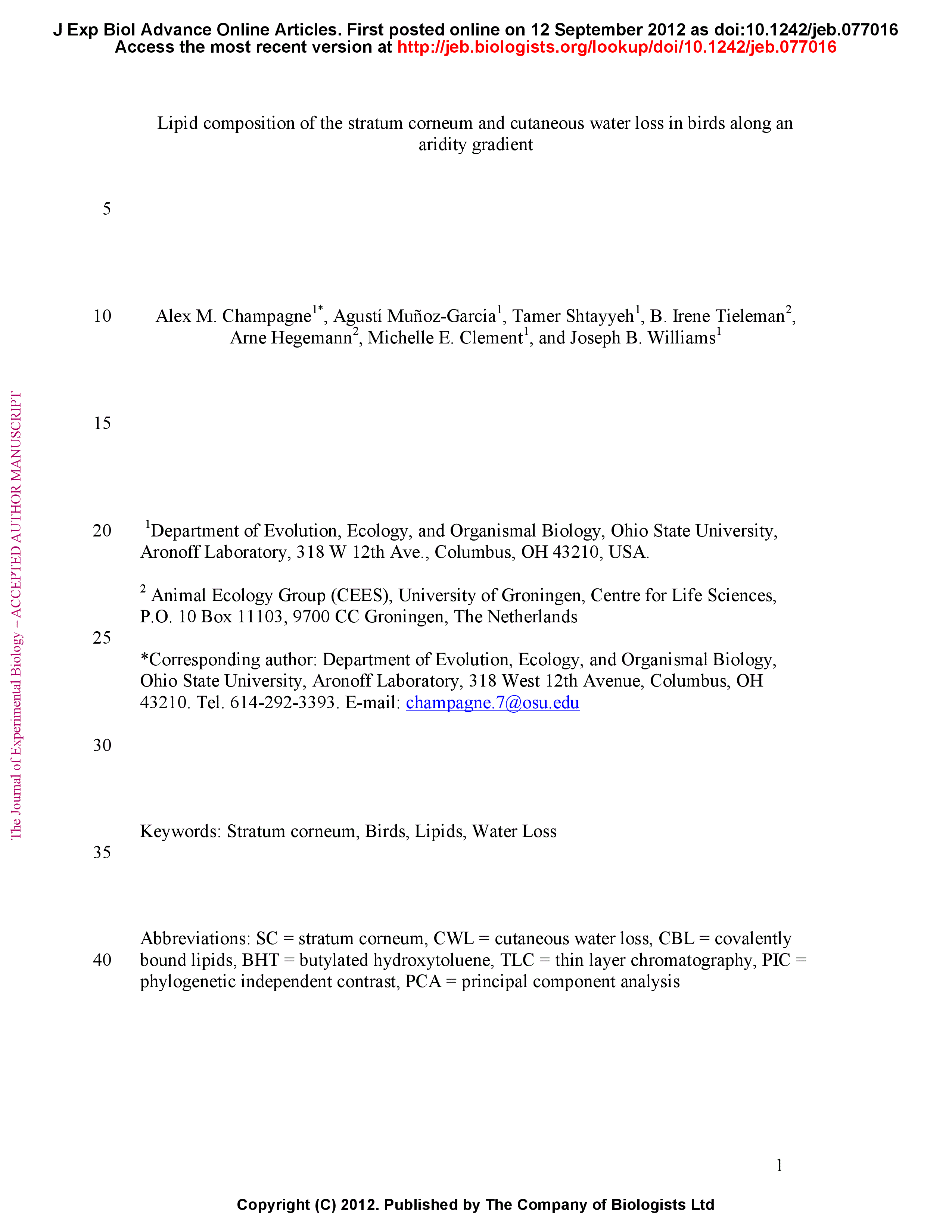Summary
Intercellular and covalently bound lipids within the stratum corneum (SC), the outermost layer of the epidermis, are the primary barrier to cutaneous water loss (CWL) in birds. We compared CWL and intercellular SC lipid composition in 20 species of birds from desert and mesic environments. Furthermore, we compared covalently bound lipids with CWL and intercellular lipids in the lark family (Alaudidae). We found that CWL increases in birds from more mesic environments, and this increase was related to changes in intercellular SC lipid composition. The most consistent pattern that emerged was a decrease in the relative amount of cerebrosides as CWL increased, a pattern that is counterintuitive based on studies of mammals with Gaucher disease. Although covalently bound lipids in larks did not correlate with CWL, we found that covalently bound cerebrosides correlated positively with intercellular cerebrosides and intercellular cholesterol ester, and intercellular cerebrosides correlated positively with covalently bound free fatty acids. Our results led us to propose a new model for the organization of lipids in the avian SC, in which the sugar moieties of cerebrosides lie outside of intercellular lipid layers, where they may interdigitate with adjacent intercellular cerebrosides or with covalently bound cerebrosides.








